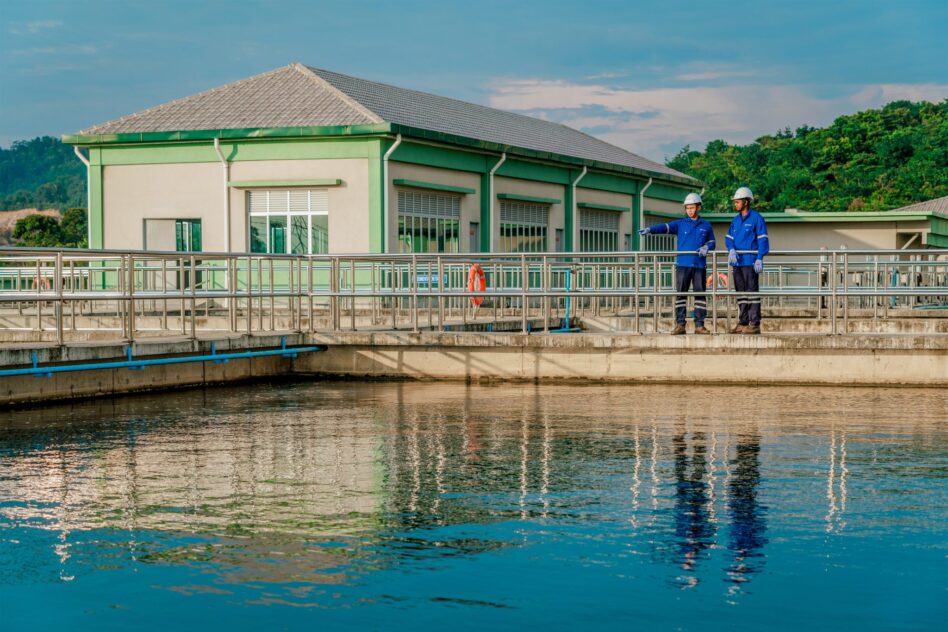THE data centre boom in Johor and the Klang Valley over the past three years has been nothing short of astounding and has led to many international headlines for Malaysia.
But to fully capture the positive economic spillover and multiplier effects from these data centre investments, we need more comprehensive digital economy and infrastructure related policies that are better coordinated across the various government ministries and agencies.
I disagree with the general viewpoint that data centres will provide only limited upside in terms of job creation and will only use up much needed and scarce energy and water resources in the country.
For many of the hyperscalers such as Alphabet (Google), AWS, Microsoft and Meta (Facebook), their data centre investments in Malaysia are part of a larger strategy to increase their workforce and digital economy activities in the country, especially in the cloud and generative AI ecosystem.
These large-scale investments also present an opportunity to “pitch” Malaysia to the senior leadership team of these global giants including Satya Nadella (Microsoft’s CEO), Ruth Porat (Alphabet’s Chief Investment Officer) and Jensen Huang (Nvidia’s CEO) during their visits here.
In addition, the entry of regional players such as Japan’s NTT, China’s GDS, Australia’s Airtrunk and Singapore’s Singtel (in partnership with Telekom Malaysia) and global co-location players such as Equinix provide opportunities to expose the customers of these companies to the Malaysian digital economy landscape.
We must also not forget opportunities for Malaysian players such as AIMS, VADS, Pi Data Center, YTL and K2 to expand their footprint in Malaysia and beyond.
Our domestic policies are slowly being rolled out and aligned to capture more of the value-added economic activities in the data centre ecosystem. But the process should be quickened and better coordinated.

For example, the updated incentives for data centres which includes guidelines on energy and water usage, as announced by MITI Minister Tengku Zafrul in October 2024, has been submitted to the Ministry of Finance (MoF) by the Malaysian Investment Development Berhad (MIDA) but has yet to be finalised and announced.
It would be a good signal if incentives for investments to decrease the usage of water or to increase the usage of recycled water were to be included in the current Green Investment Tax Allowance (GITA) which is focused primarily on renewable energy investments.
Further incentives for domestic content and for the involvement of local players such as Gamuda, IJM, and Sunway in the construction process would also increase the domestic spillover of data centre construction.
But the policy space should be expanded beyond financial incentives to include policy updates and innovations that will increase other value-added economic activities.
While it is commendable that both PLAN Malaysia (under the Ministry of Housing and Local Government) and the Malaysian Communications & Multimedia Commission (MCMC, under the Ministry for Communications) have come up with their own guidelines on data centres, these are mostly technical documents which are not particularly innovative.
An example of policy innovation is the effort by SPAN to work with some of the state water providers including Air Selangor to amend existing regulations to allow for smaller modular water processing plants specifically for data centre usage as long as the water processed is for self-consumption.
This will not only speed up private sector investment in the water sector but also spur the development of the private sector water services industry in the country, with the potential of building capabilities to expand abroad.

Such modular treatment plants are cheaper and faster to roll out and can even make use of recycled wastewater to cool the data centres thereby saving current potable water capacity for residential and commercial use.
Thinking more ambitiously, the Ministry of Energy Transition & Water Transformation (PETRA) together with the Ministry of Natural Resources and Energy Transition (NRES) should take proactive steps to evaluate the potential of small modular nuclear reactors to power data centres.
These SMRs can also be seen as part of the solution to move away from coal power plants. Data centres need reliable power which small nuclear reactors can provide.
Battery storage technology, although vastly improved, is still not at the stage where it can solve the energy intermittency problem from renewable energy sources, for now at least.
The reopening of the Three Mile Island nuclear plant in the United States by Microsoft to create a gigantic 853 MW power source for data centres is an indicator of future trends.
Perhaps the biggest policy gap in the data centre space has to do with the deployment of the processing power and the growth of the services sector in the cloud and generative AI ecosystem that is powered by data centres, especially the top tier ones.
Contrary to recent news reports, there is no comprehensive National Cloud Policy in Malaysia which outlines specific details on how to grow the larger cloud service ecosystem.
For example, there is no clear roadmap and timeline for different government services to be put on the cloud and for these contracts to be awarded publicly and transparently.
Having this policy will allow for the incorporation of conditions and incentives for the local deployment of data centre processing power to enhance the cloud service ecosystem in Malaysia, including the incorporation of Generative AI capabilities in the service provision.

In other words, Google Cloud or AWS (together with some of its local vendor partners), for example, would be incentivised to deploy some of the processing power from its data centres in Malaysia to power specific government services on the cloud (via commercial terms) with the requirement that a large percentage of the workforce to deploy these services be based in the country.
Right now, under Jabatan Digital Negara (JDN now, formerly MAMPU), we only have an outdated public procurement policy for government agencies to procure services from approved cloud service providers (CSPs) and a hodgepodge of very general guidelines on the digitalisation of various government services and the digital infrastructure ecosystem.
Many of these policies are not even available in English, which is needed if we want to bring in the serious cloud service providers, at the international, regional and local levels.
The timing is ripe for the newly created Ministry of Digital to drive the growth of this cloud and Generative AI ecosystem via the recent data centre investments with policy alignment and expertise coming from MDEC and supported by JDN as well as MIDA and MOF.
Without a well-coordinated approach in policy innovation across the relevant ministries and agencies, the likelihood of the economic spillovers and value-added activities being somewhat limited at the same time as our energy and water resources are being used up will be much higher, giving more ammunition to the data centre naysayers.
One practical way which the data centre players can provide valuable inputs in a coordinated manner to the government of Malaysia is to create a data centre operators association as suggested recently by Liew Chin Tong, the deputy MITI minister. – Nov 4, 2024
Professor Dr Ong Kian Ming is the vice chancellor for external engagement, Taylor’s University and former deputy minister of investment, trade and industry.
The views expressed are solely of the author and do not necessarily reflect those of Focus Malaysia.
Main image: ensureservices.com









